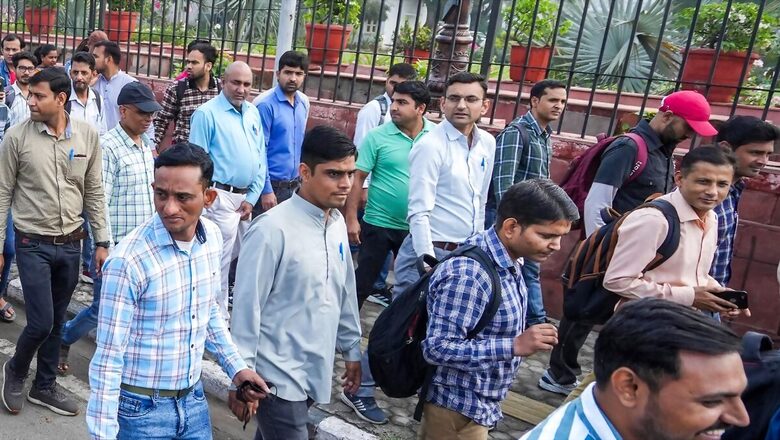
views
Almost 50% of India’s young informal workforce and those outside it are willing to upskill, chalks out recommendations to bridge India’s employability gap, a new report has found. The findings showed that adding 100 million people to the workforce has the potential to increase the GDP by 20% and propel the Indian economy towards $4 trillion.
Omidyar Network India (ONI), an investment firm, in its report ‘The Next Frontiers: Skilling and Employability Solutions for the Next Half Billion’, explored the opportunity in the Indian market to skill and employ the vast pool of unskilled, low- and moderately-skilled workers. Redseer was the research partner for the project.
Also Read: Salary Hike Above Industry Standard: Are Companies Really Flexible For Your Talent?
According to the report, almost 50% of young workers in India are highly willing to learn new skills towards better employment opportunities, including:
- Skilled Aspirers – moderately high-skilled blue/grey collar workers under 30 years of age
- Tenacious Strivers – similar to Skilled Aspirers working in low-semi skilled jobs
- Home-based entrepreneurs – under-30 females who have or would like to start a home-based business also expressed high willingness to upskill.
The report highlighted that entrepreneurs stand face-to-face with a massive opportunity for a 100-million strong market of young workers with skilling solutions.
Amongst the cohorts that have the willingness to learn new skills, some also exhibited a high willingness to pay.
- 73% of Skilled Aspirers and 59% of Home-based Entrepreneurs are highly willing to pay to learn new skills that will help them acquire jobs that provide better compensation, greater stability, and opportunities to grow
- 45% of men in the Skilled Aspirers persona are eager to pursue entrepreneurship, while women (33%) are more inclined to progress in their current jobs
- These cohorts are a vast pool of untapped potential where entrepreneurs in India can improve employability and impact livelihoods of a large section of India’s NHB
- The gap between skills and the willingness to learn and pay for those skills presents an opportunity for entrepreneurs to create solutions worth approximately Rs 1.5 to 2 billion
- The most important skills that entrepreneurs can build solutions for are basic business management skills in addition to digital marketing, communication and enhanced vocational skills.
Governments and non-profits can bridge the employability-skilling gap for 130 million individuals through skilling initiatives:
- The report shows that in some cohorts, while the willingness to skill is high, the willingness to pay for learning opportunities is relatively low – excluding them from the target pool for entrepreneurs and profit-based opportunities
- For populations like these, the government, along with non-profits, can bridge the gap between willingness to skill and willingness to pay through support initiatives like subsidised skill development programmes, strengthening initiatives like apprenticeship programmes and capital support programmes
- Policy changes around paid childcare and parental leave policies can play a vital role in bringing and keeping workers into the fold of employability, especially for the women who would like to enter the workforce.
The report underlines six key takeaways:
1. Greater focus on the blue/grey collar skilling and employability will yield the greatest dividends
2. Given heterogeneity of the Indian workforce, solutions will need a granular approach
3. There is significant space for market solutions in both skilling and employability support
4. Government and nonprofits have the opportunity to cater for sections that can’t afford loss of pay or have low ability to pay for skilling.
5. Skilling & employability support in 6 key areas will have disproportionate impact
6. Awareness building, short program duration, content contextualisation and financial aid are crucial to successful implementation
Siddharth Nautiyal, partner, Omidyar Network India, said, “Our goal is to enable collaborative solutions to address skilling gaps and improve the state of employability, especially for the underserved. We also hope that the cohorts identified in the report give us a deeper understanding of the various segments and their requirements.”
Methodology:
The report includes a primary sample survey of 5,000 respondents of various cohorts with intersections of gender, income, and location. It also includes 100 in-depth qualitative interviews of workers, 35 interviews of employers, and over 20 discussions with experts and entrepreneurs.
















Comments
0 comment